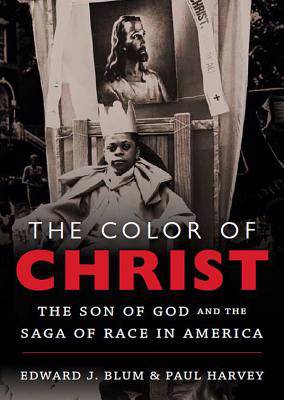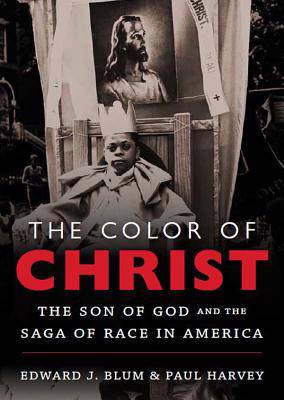
- Afhalen na 1 uur in een winkel met voorraad
- Gratis thuislevering in België vanaf € 30
- Ruim aanbod met 7 miljoen producten
- Afhalen na 1 uur in een winkel met voorraad
- Gratis thuislevering in België vanaf € 30
- Ruim aanbod met 7 miljoen producten
Zoeken
The Color of Christ LUISTERBOEK
The Son of God and the Saga of Race in America
Edward J Blum, Paul Harvey
CD | Engels
€ 43,45
+ 86 punten
Uitvoering
Omschrijving
How is it that in America the image of Jesus Christ has been used both to justify the atrocities of white supremacy and to inspire the righteousness of civil rights crusades? In The Color of Christ, Edward J. Blum and Paul Harvey weave a tapestry of American dreams and visions--from witch hunts to web pages, Harlem to Hollywood, slave cabins to South Park, Mormon revelations to Indian reservations--to show how Americans visually remade the Son of God time and again into a sacred symbol of their greatest aspirations, deepest terrors, and mightiest strivings for racial power and justice. The Color of Christ uncovers how, in a country founded by Puritans who destroyed depictions of Jesus, Americans came to believe in the whiteness of Christ. Some envisioned a white Christ who would sanctify the exploitation of Native Americans and African Americans and bless imperial expansion. Many others pictured a messiah, not necessarily white, who was willing and able to confront white supremacy. The color of Christ still symbolizes America's most combustible divisions, revealing the power and malleability of race and religion from colonial times to the presidency of Barack Obama.
Specificaties
Betrokkenen
- Auteur(s):
- Uitgeverij:
Inhoud
- Taal:
- Engels
Eigenschappen
- Productcode (EAN):
- 9781470830694
- Verschijningsdatum:
- 21/09/2012
- Uitvoering:
- CD
- Formaat:
- MP3-formaat
- Afmetingen:
- 135 mm x 190 mm
- Gewicht:
- 99 g

Alleen bij Standaard Boekhandel
+ 86 punten op je klantenkaart van Standaard Boekhandel
Beoordelingen
We publiceren alleen reviews die voldoen aan de voorwaarden voor reviews. Bekijk onze voorwaarden voor reviews.











